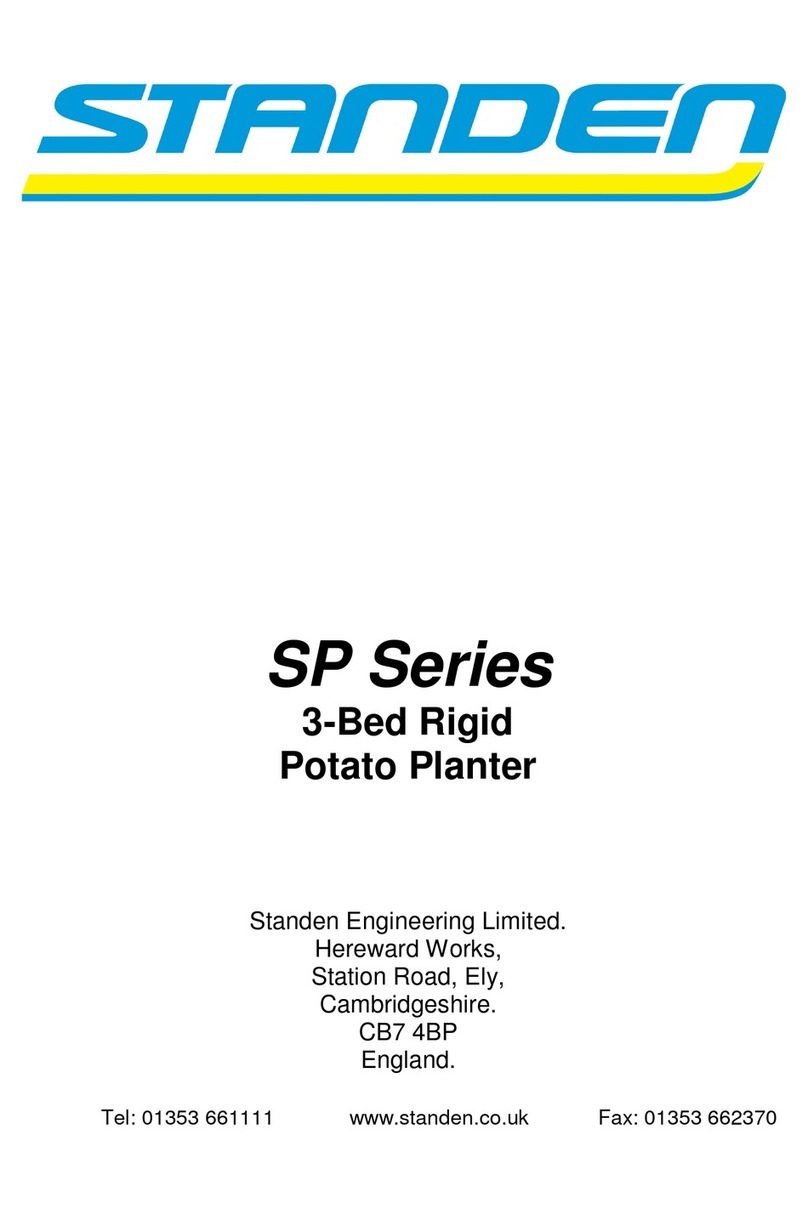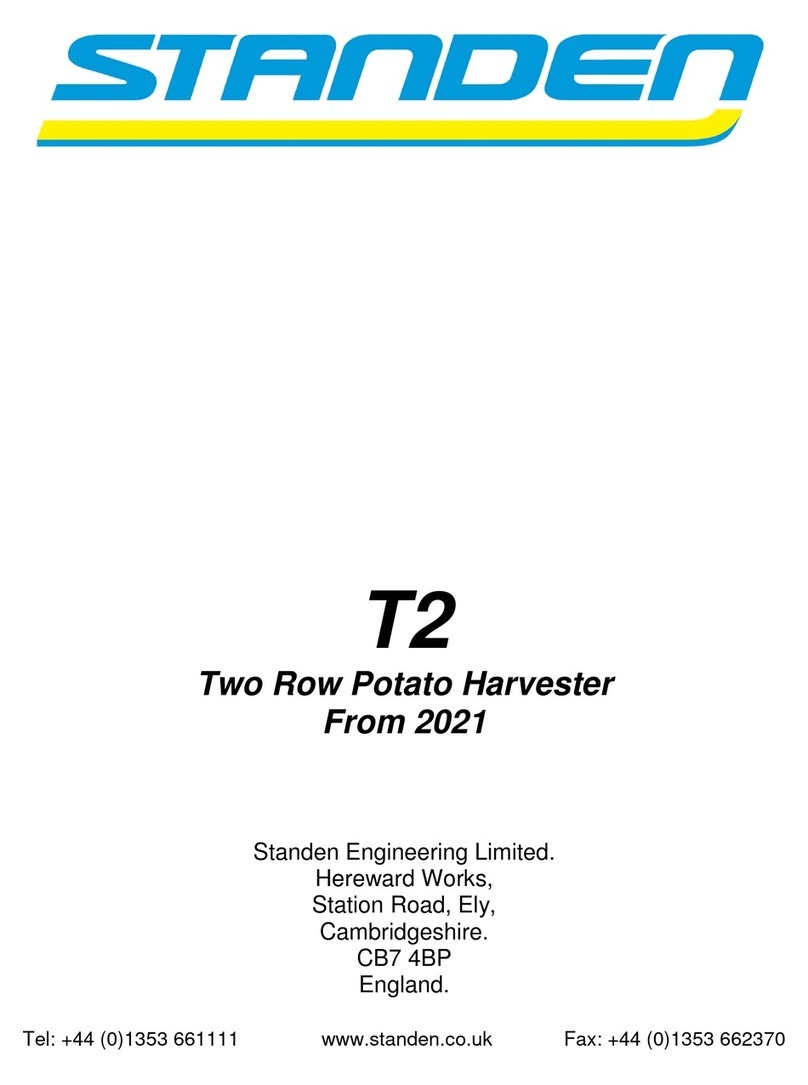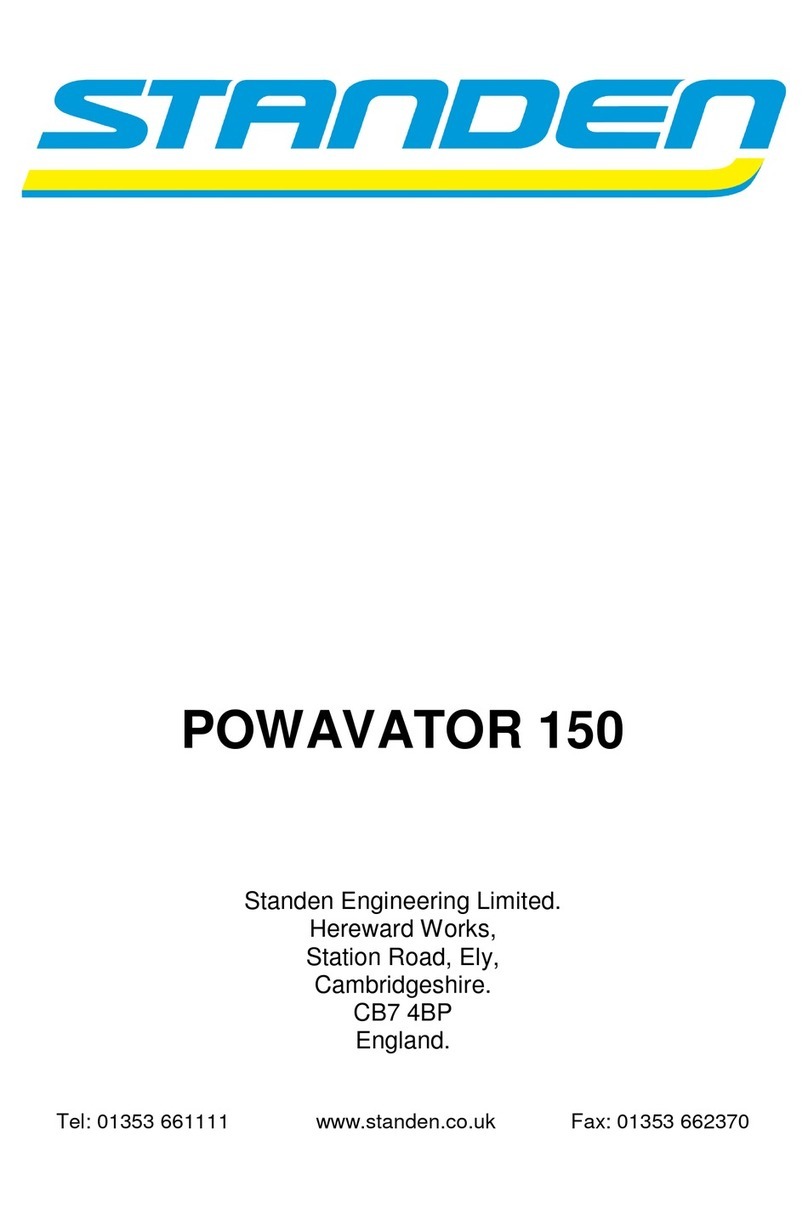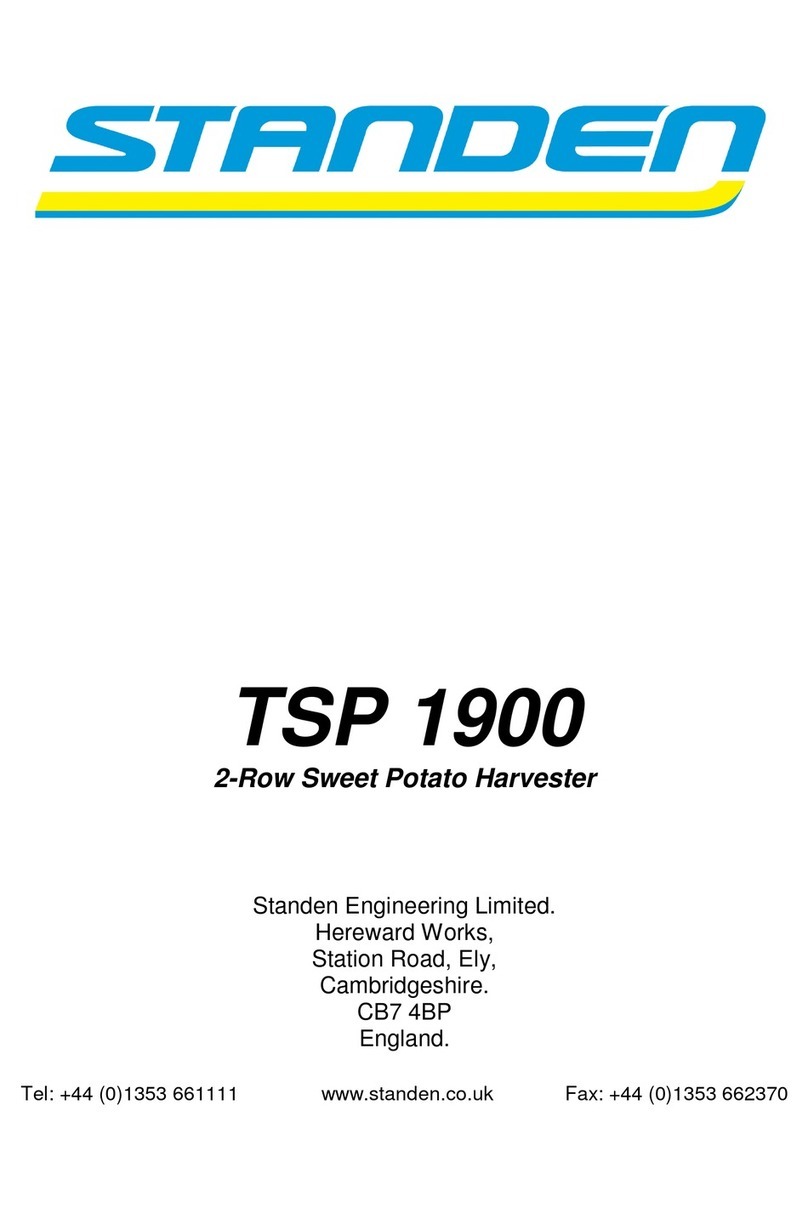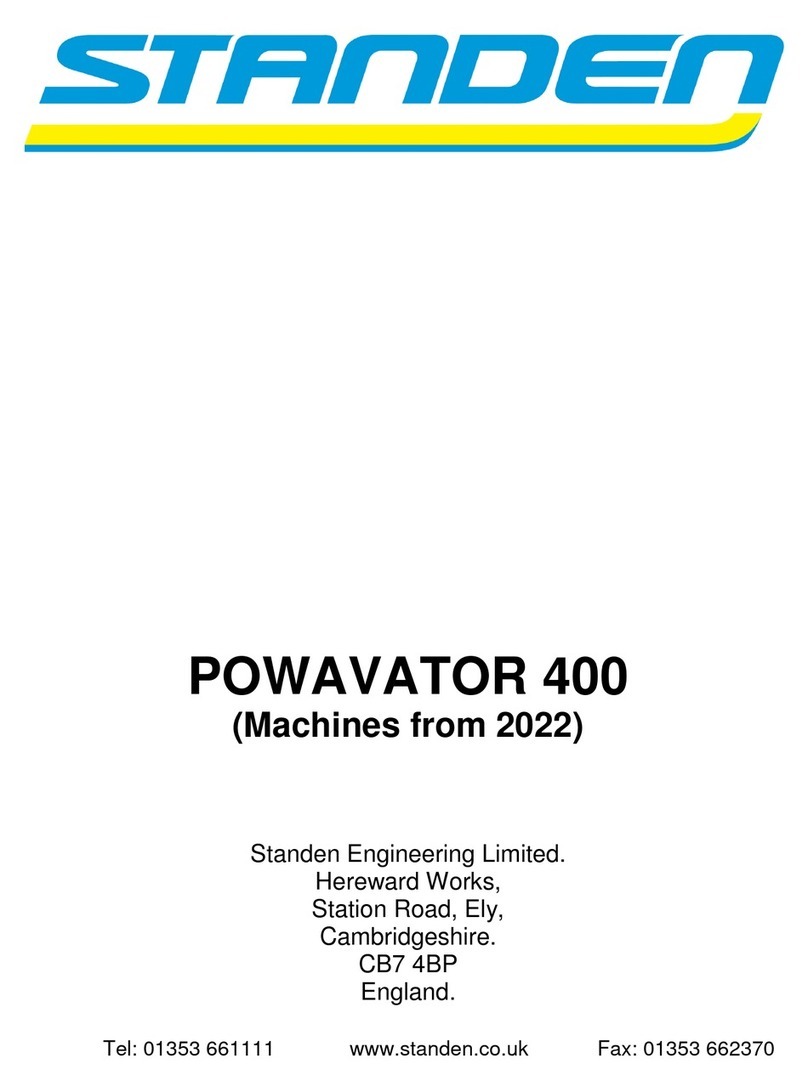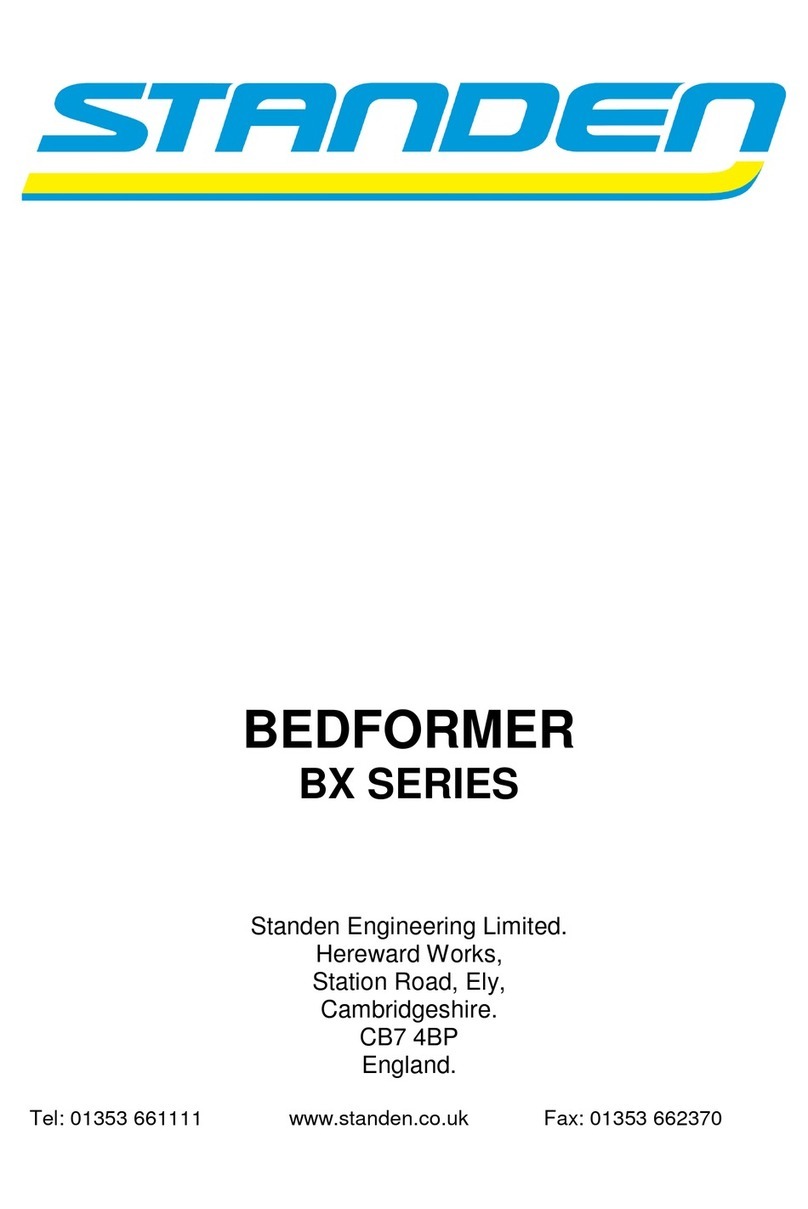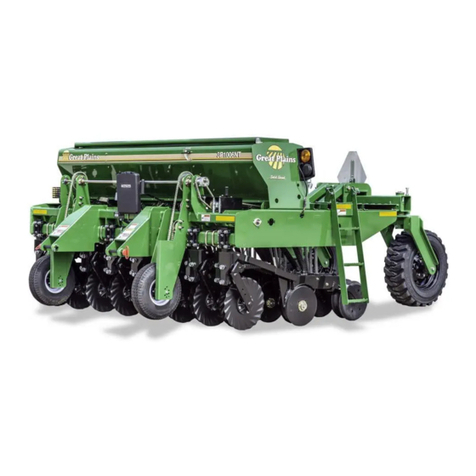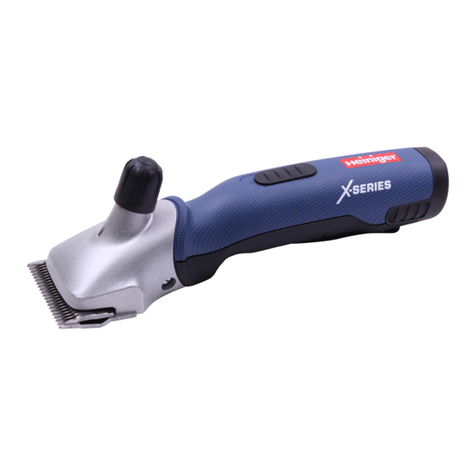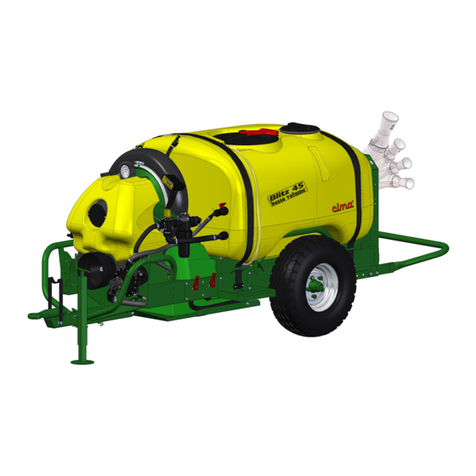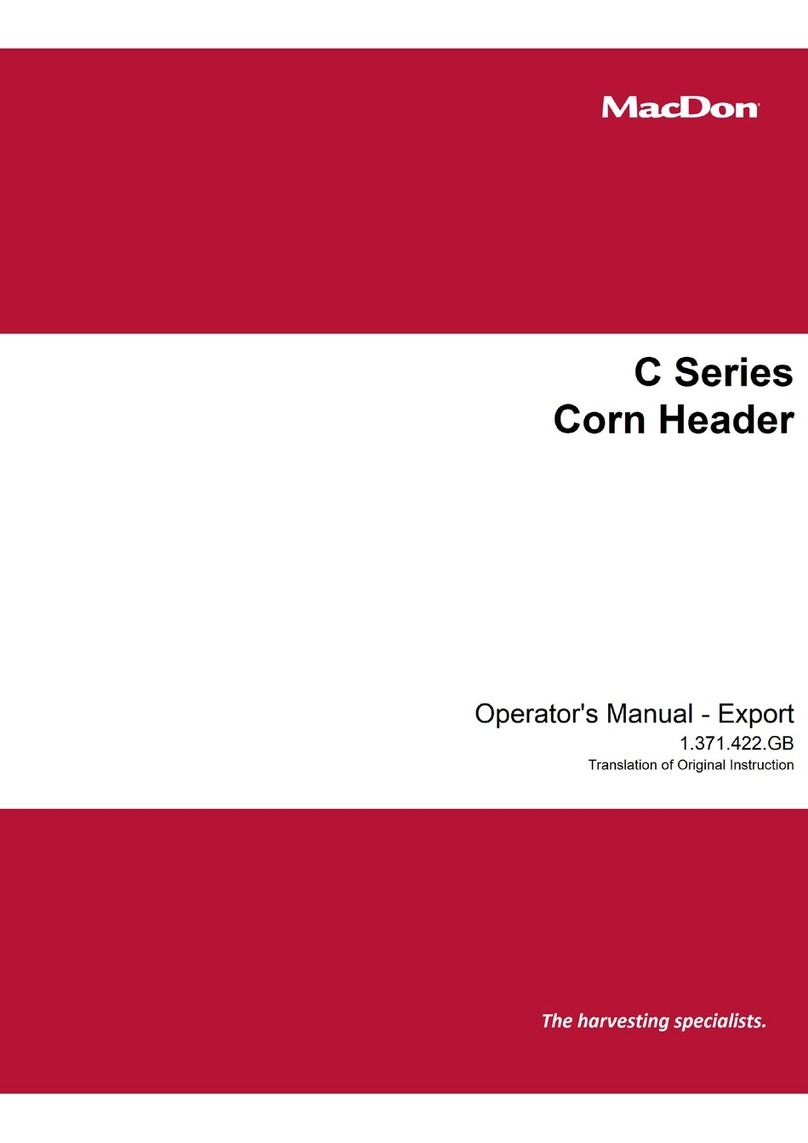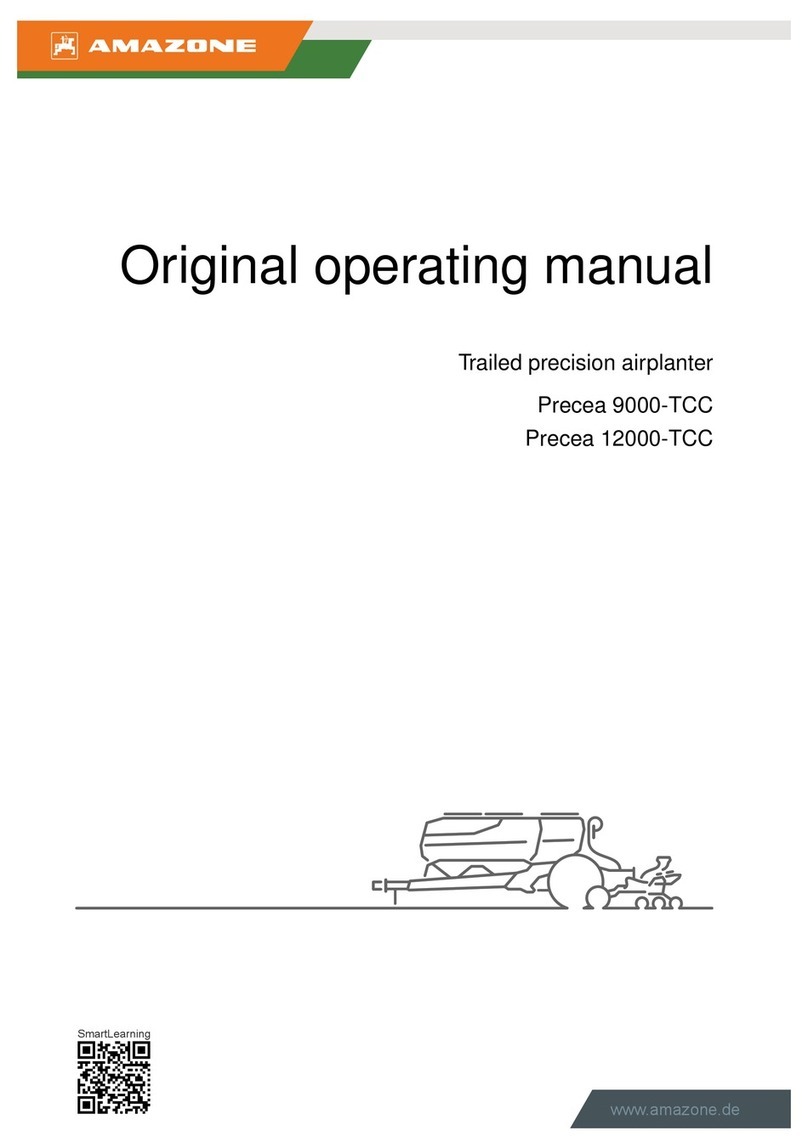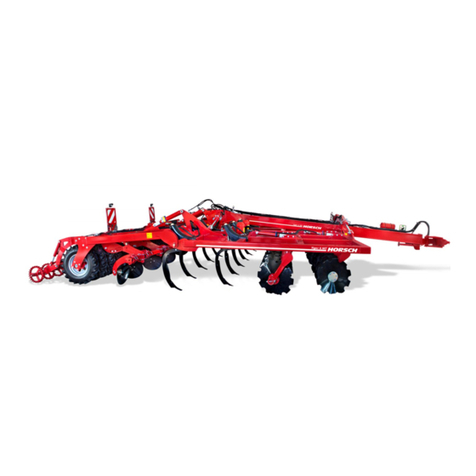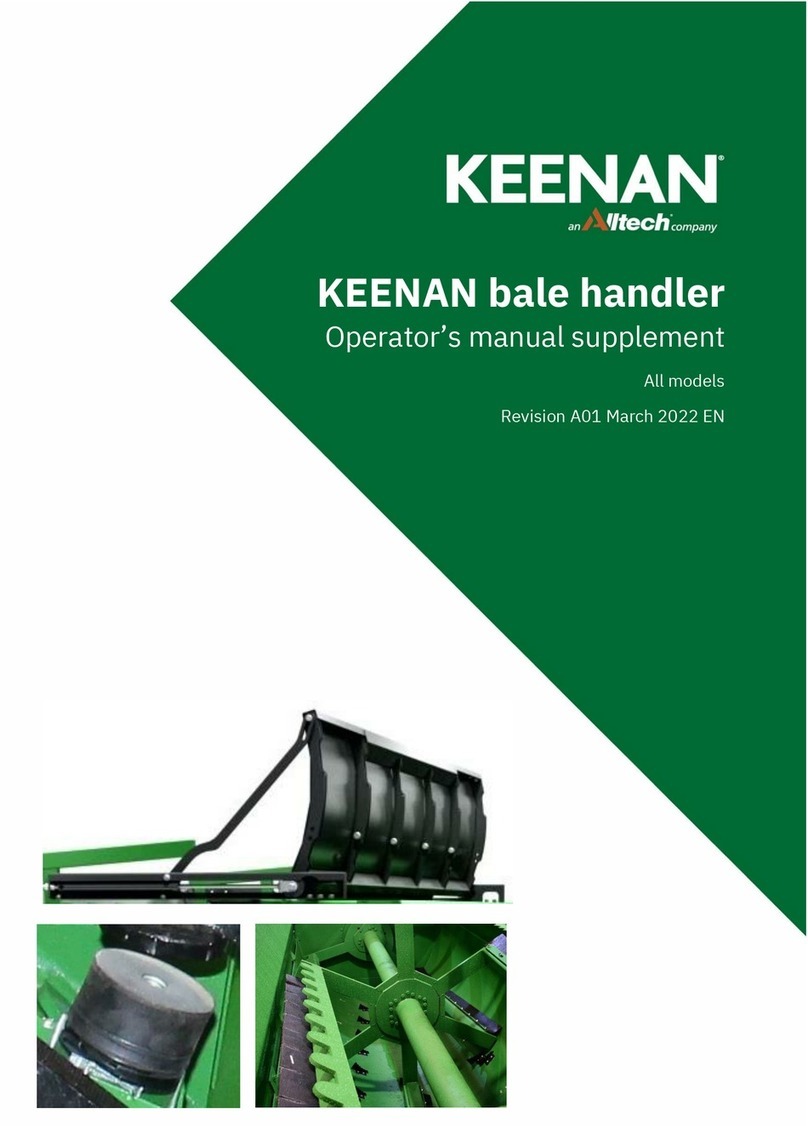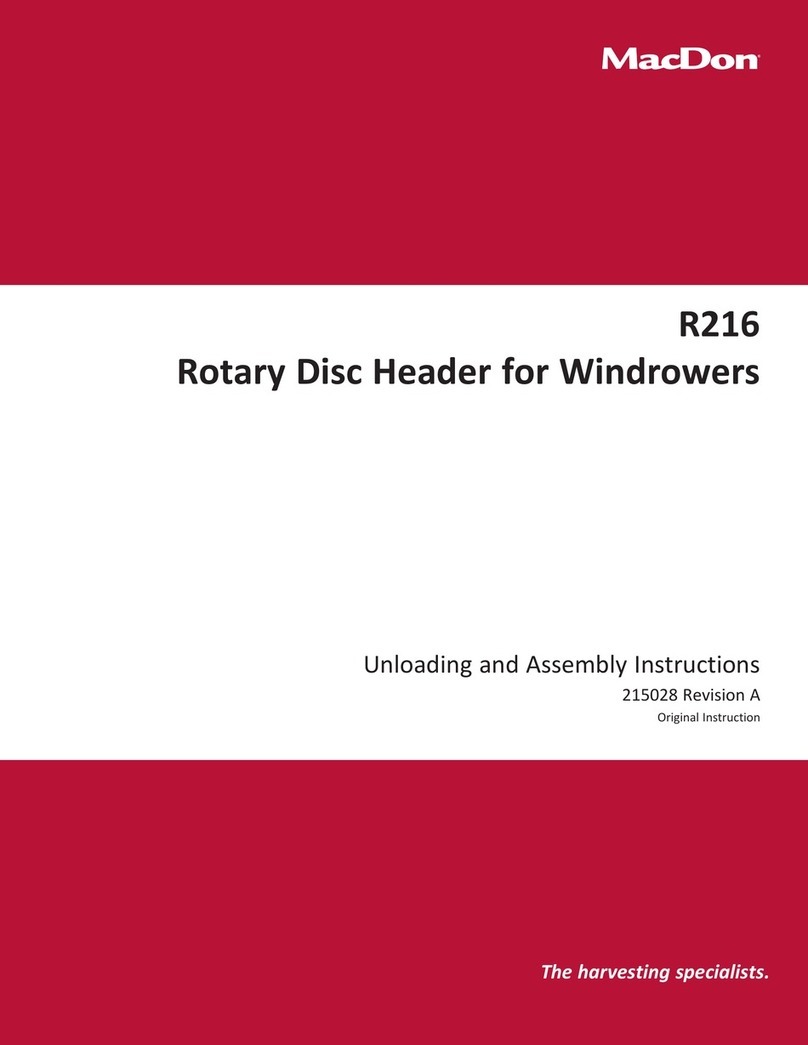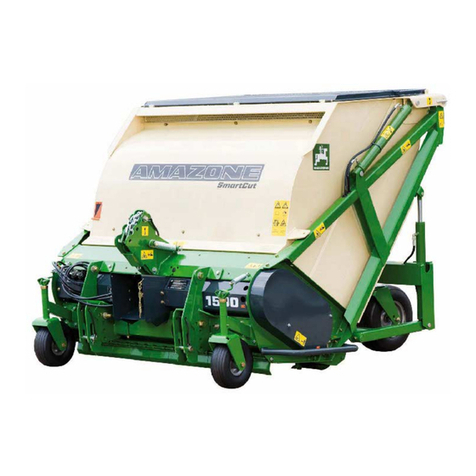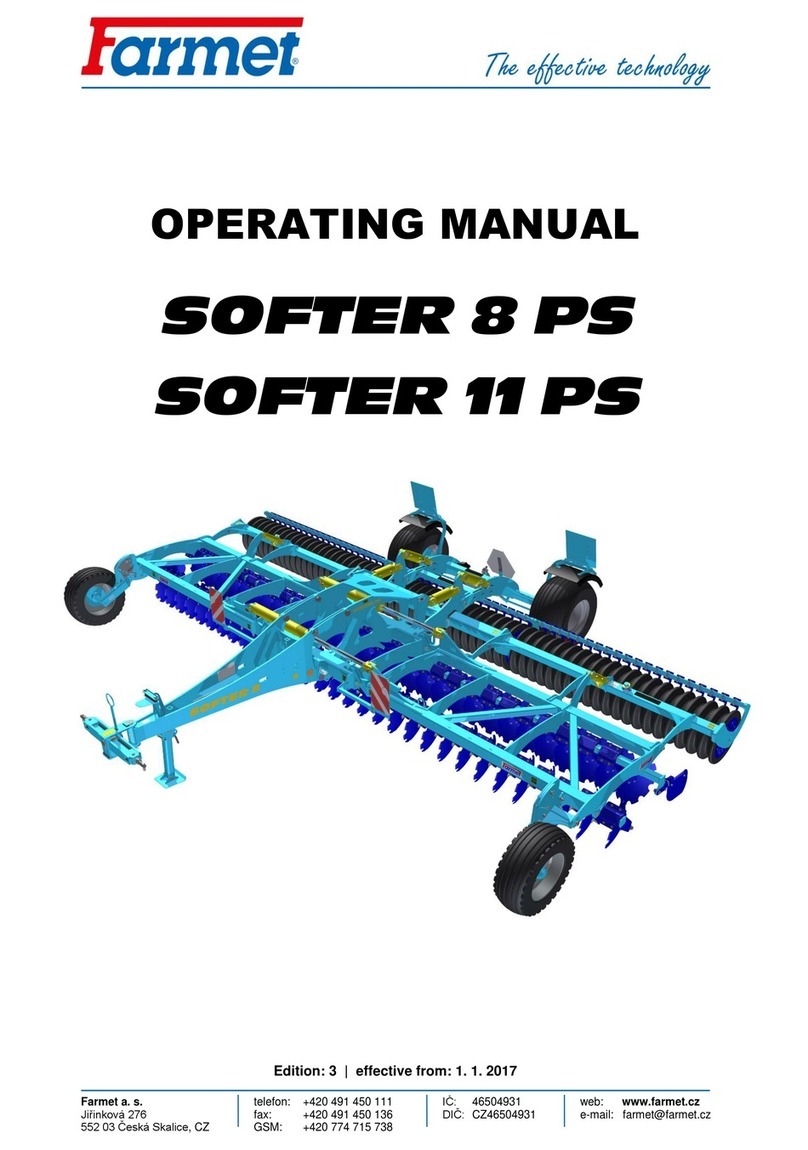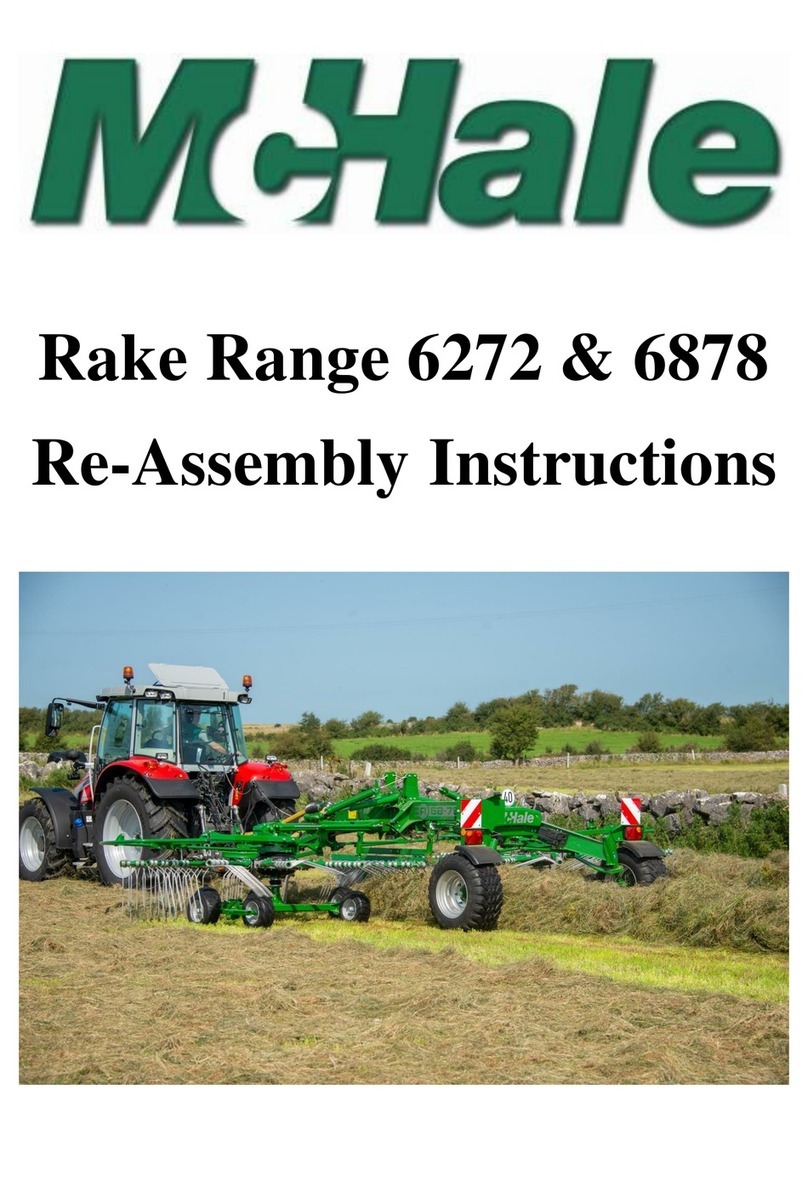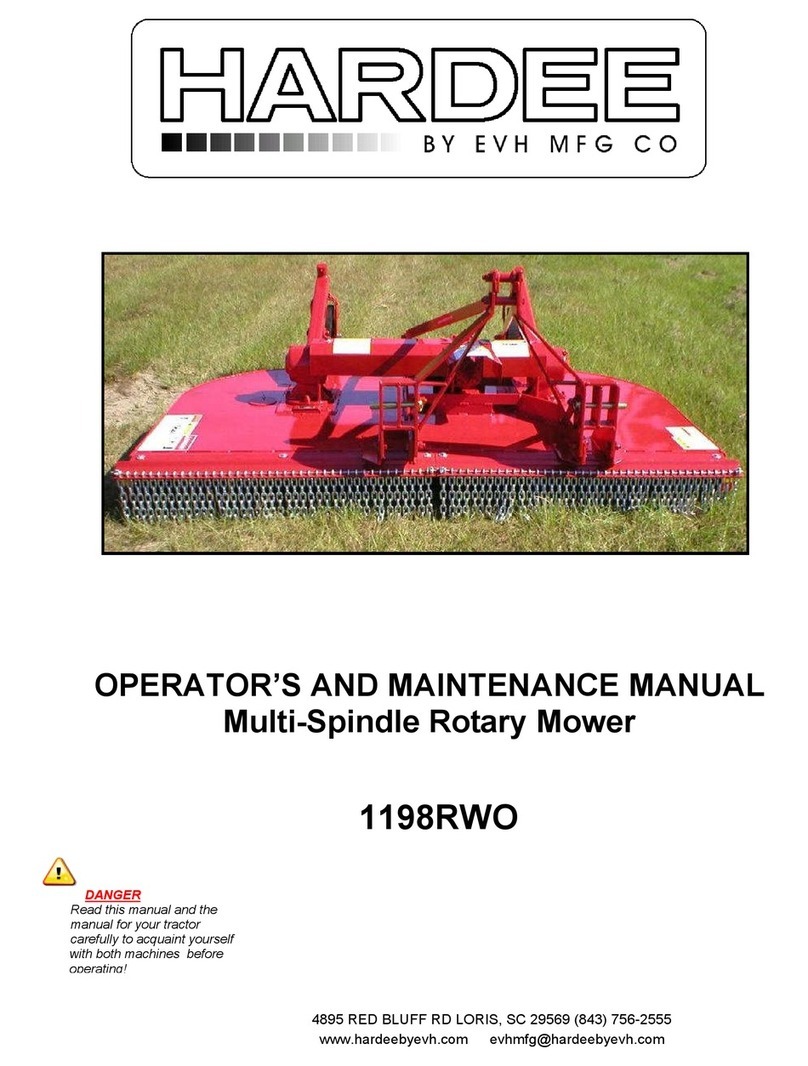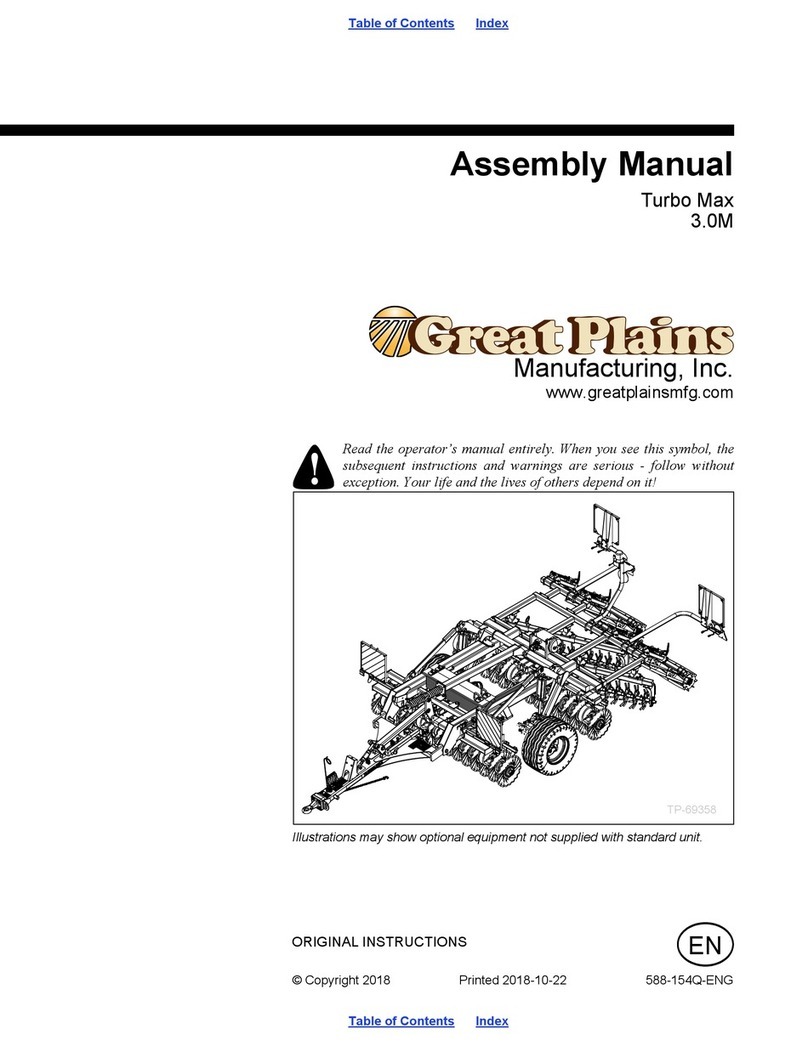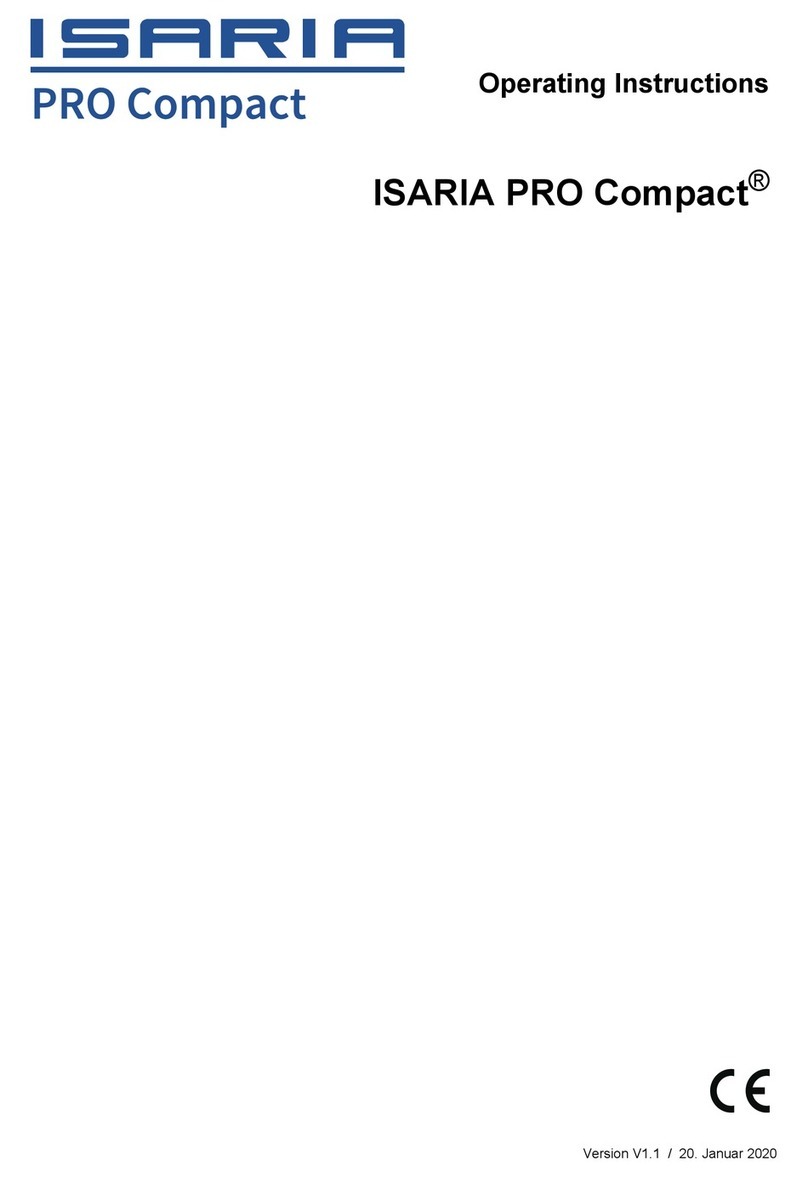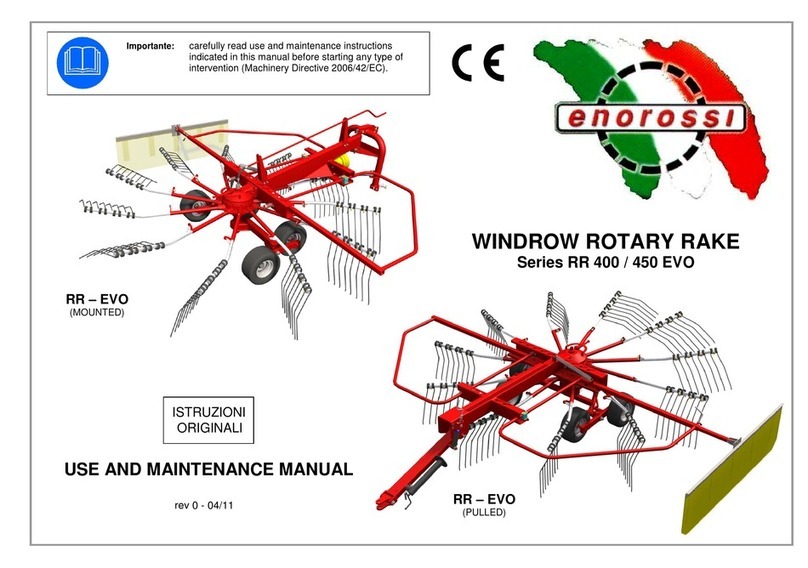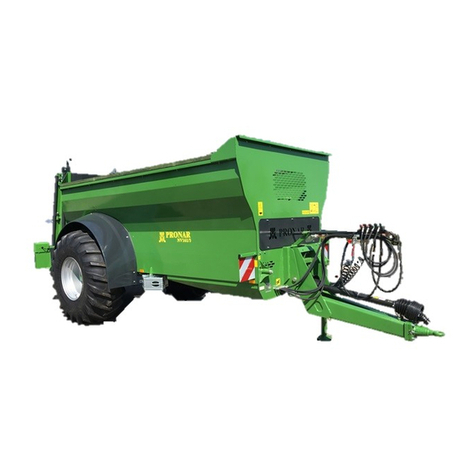
Safety
Standen SP Series Potato Planters have been designed to comply with current
Safety Regulations. However, as with all machinery there will be inherent dangers
whilst operating and carrying out maintenance on the machine. The following list of
precautions should therefore be brought to the attention of all persons operating and
working on the machine. The list is not exhaustive. All machinery is potentially
dangerous and great care must be exercised by the operators at all times. Standen
Engineering Limited will not accept liability for damage or injury caused by their
products except when such liability is specifically imposed by English statute.
The machine must never be operated by untrained personnel or
children.
The tractor must be of a suitable size to lift the implement safely. This
may entail the fitting of front weights to counterbalance the machine.
Always check that the machine has been correctly mounted to the
tractor before setting off on operations and the stabilizers are correctly
set.
Never lower the side wings or set machinery in motion before ensuring
that everyone in the vicinity is aware of your intentions.
Never allow children or animals in the vicinity where machines are
working and never allow anyone to ride on the machine.
Never attempt to fit drive chains or drive belts to the machine while the
drive sprockets or pulleys are in motion.
Normal safe working procedures should be adopted at all times.
Reduce speed when transporting the machine on sloping ground.
Do not work on ground where there is a possibility of overturning or
across steep slopes.
The working area should be kept clear and free of obstructions at all
times. Be alert for hidden obstructions. Should the machine hit an
obstruction, stop and check for damage before proceeding.
Wear substantial or proper safety footwear. Avoid loose clothing near
moving parts. Wear gloves when handling the implement or parts with
sharp edges.
Before carrying out any work on the machine, lower the machine to the
ground, switch off the tractor engine, apply the handbrake, remove the
ignition key. Never work on or pass under the machine when it is raised
on the tractor hydraulic linkage.




















